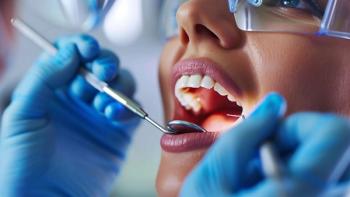
How Bispecific Antibodies Work and What Patients Can Expect
Bispecific antibodies connect the immune system with cancer cells. They offer an efficacious treatment option, but there are side effects.
Bispecific antibodies are promising treatments for patients with certain types of blood cancers. However, since they work by activating the immune system against the tumors, patients being treated with these drugs must be closely monitored after treatment, an expert said.
In a recent interview, Courtney Van Houzen, an oncology resident at Munson Healthcare, Cowell Family Cancer Center in Traverse City, Michigan, explained how bispecific antibodies work, and what patients with cancer can expect directly after treatment and longer term.
READ MORE:
Transcript:
A lot of people are starting to be a little bit more familiar with monoclonal antibodies. … I always say that the structure is a Y and a monoclonal antibody has two arms that [are] targeting typically something on their tumor — some part of their cancer — and antibody. And both of its hands of the Y are reaching towards some part of that tumor. It’s the drug itself, that's doing all the work.
For a bispecific antibody, it's still one antibody, but their arms that reach out are reaching for two different things. And so one arm is still reaching out for that tumor or that cancer molecule, but the other arm is reaching out to your own immune system.
I always joke that you spend more time in life not having cancer than you do having cancer, and that is because your immune system is supposed to fight off cancer. But tumors get very sneaky, and they get very smart, and they can evade the immune system. But if these drugs help that immune system locate that tumor, the immune system is really able to do the brunt of the killing when it comes to that tumor death.
So these bispecific products basically take the hand of your immune system and bring it to the tumor so that it can just naturally, “kill off that cancer and kill off that tumor.” So especially with patients who have really high tumor burdens — lymphoma patients, myeloma patients —these products work really well, really fast. And so that's why I explain, those cytokine-release syndrome and all of those toxicities we see up front. It's because of those high tumor burdens, that these drugs are so good at delivering that tumor kill that your body can be overwhelmed by that inflammatory response. That's why we see these toxicities come about, and that's why we like them to either be near a hospital or near the clinic for really close monitoring.
But then as time goes on, that tumor burden falls to low, or hopefully nothing, and then [the patients] do really well, but we have to maintain that response over time. So these patients do, unfortunately, have to keep coming back to the clinic, weekly, bi-weekly. We you know you see research trying to push out that time frame to find that sweet spot of good response and split low toxicities.
I think that bispecifics do a really wonderful job for patients who maybe otherwise wouldn't be able to do some of the other cellular therapies that are approved in this space.
For more news on cancer updates, research and education, don’t forget to




